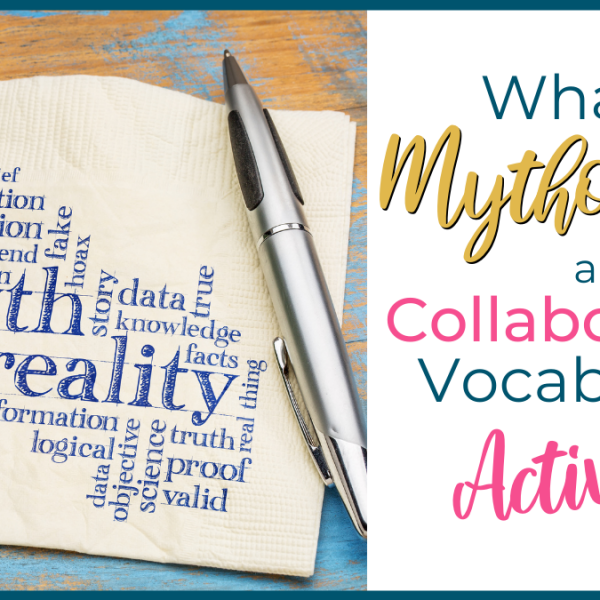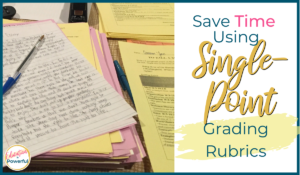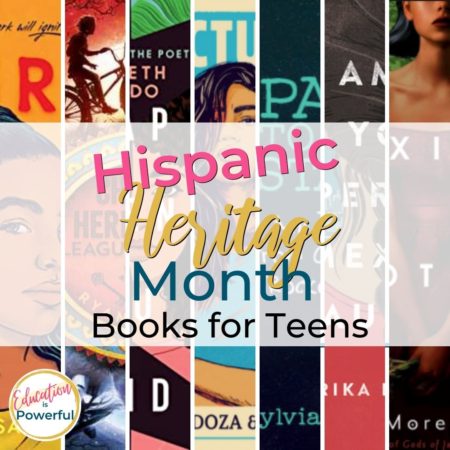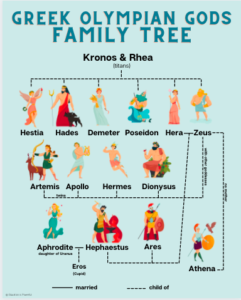What is Mythology?
Every semester, I start my Mythology class out with this question – What is Mythology?
This may seem like a concept that could easily be solved by looking up “mythology” in the dictionary. The definition from dictionary.com states that mythology is “a body of myths, as that of a particular people or that relating to a particular person:Greek mythology” or the fourth definition states, “a set of stories, traditions, or beliefs associated with a particular group or the history of an event, arising naturally or deliberately fostered.”
Neither one of these definitions actually encompass all that Mythology is. And to make it worse – they aren’t definitions that are super clear for students.
So, in order to help students have a deep and personal understanding of the concept of mythology, I used this collaborative vocabulary activity. Students engage in back and forth conversations, accept, reject, and combine concepts in pairs, teams, and whole class to come to a consensus.
It is amazing and 100% worth the time.
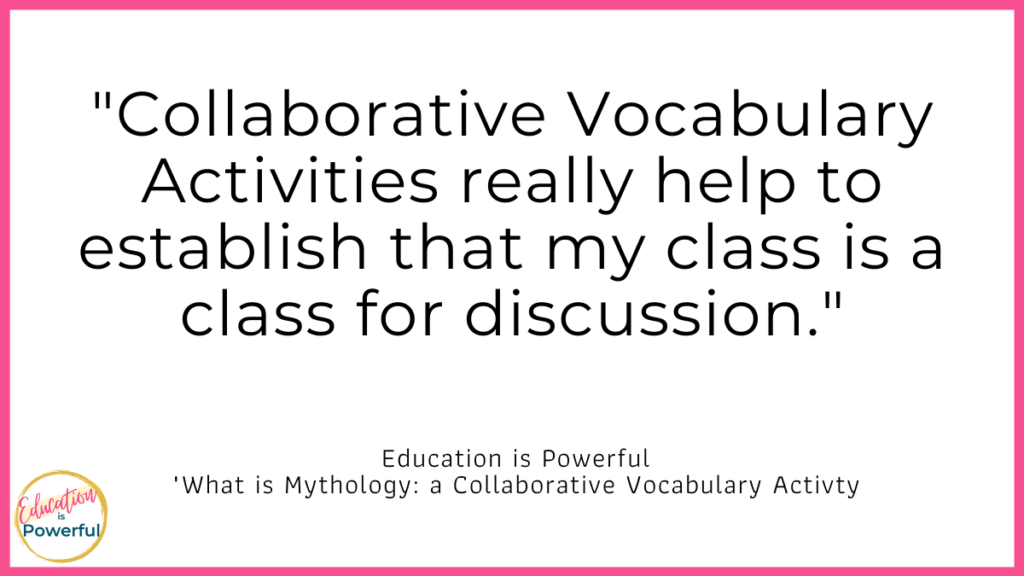
6 steps to using this collaborative vocabulary activity in your class
Step 1: Choosing the Deep Word
The first step is to start with a deep word. These are Tier 3 words – based in content and essential for learning and understanding. You need to be careful that you aren’t choosing words that don’t have multiple meanings or interpretations. They should be based around key concepts. These types of words often show up in your Essential Questions.
For example, in my Mythology class, another Tier 3 word might include Hero. How students define a hero, may be very different from each other. And while there is a dictionary definition, it is a word with nuance and depth beyond the dictionary.
Step 2: Gather Context Clues from Examples
The next step is to have students brainstorm and take notes on the characteristics of the word.
For mythology, it really is “the study of myths.” So, what students really need to understand is what makes a piece of text a myth?
I gather examples of myths, we read them together or in pairs or teams – I have varied the structure and do it different ways each year. Lately, I have been using partners and teams, rather than reading the myths to the class. This fosters class discussion and gives me the change to teach my routines for getting into partners and teams on the first day of class. I like to jump right in.
Student take notes on the characteristics they think make something a myth based on these examples. There are no right or wrong answers. And I as the teacher get to pre-assess my students background knowledge on mythology. Win-Win.
Want to try this out in your class, but don’t want to make everything yourself?
Step 3: The First Definition
After students have brainstormed, then they get into partners or teams to write their first definition.
Together they share and then have to collaborate on a definition. Sometimes teams agree easily. Sometimes they don’t. And I get to teach how we agree and disagree in class and introduce my Class Discussion Frames! But what most often happens is that students get to learn from each other and it starts to deepen their understanding.

Step 4: New Group, New Definition
Now that students have their first definition, they will get together in a new team. I have had students get together so that they have 4-6 new partners with 4-6 new definitions. I have also done it where students who were partners join other sets of partners to form new groups of 4-6. Either way works!
There is also a more advanced way of doing this called an Expert Jigsaw – read all about how to do one HERE.
Students repeat the process of sharing, agreeing, disagreeing, combining, making decisions, and writing a new definition together.

*Pro tip: Sometimes students will just create one big list because they wan’t to include everyone’s definition and not disagree. So I set a limit to the number of words, sentences, or list items. It’s arbitrary, but it forces them to make choices.
Step 5: Coming to a Consensus
By this point students have worked with a variety of people, heard many definitions, and consolidated ideas. The last step is to come to a consensus as a class.
For this section of the activity, I have each group write their definition on the board. (I love seeing my board covered with definitions!)
The teacher becomes the facilitator. I start by asking students to read each definition. Then we start combining elements or pieces of the definitions. As we combine I write the main idea in the center and erase everything that relates to it.
*Pro Tip: You can guide students to using the academic vocabulary you would like in this phase. For example, “X, Y, and Z all relate. Can we call this _____(insert the word your want).” In Mythology, I often hear students say that myths are a religion, but I might say, “Can we call this a belief system?” In the 32 times I have taught this lesson, I have never had a student fight me on this.
This is also the time to reject different ideas. Students might reject something because it is too specific, too broad, or an outlier.
Step 6: Write the Final Definition
After all this, you then write a final definition as a class. Every voice is heard and every student is engaged in having a deep understanding of concepts.
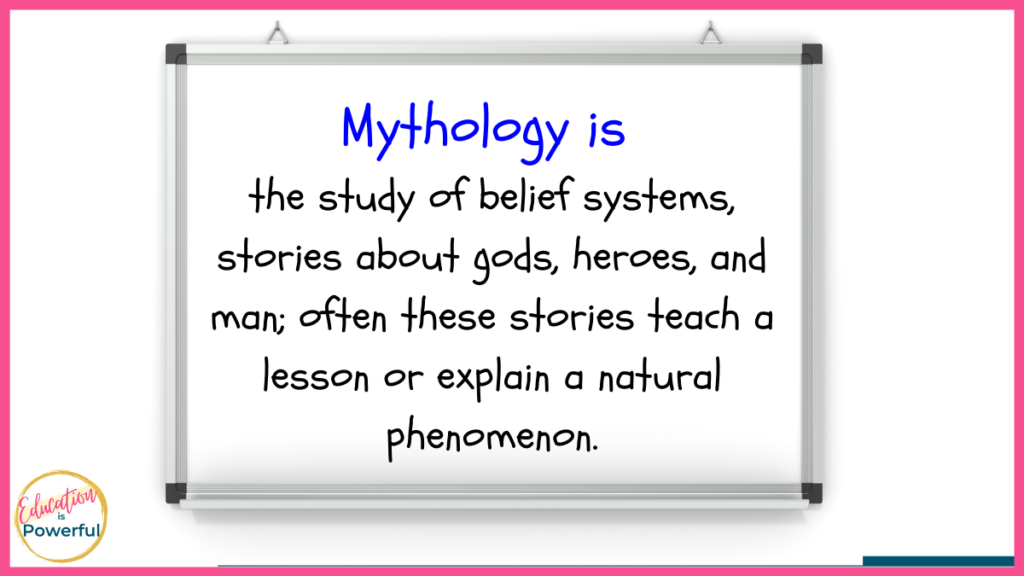
The Bigger Picture
In my Mythology class, when you first think of a myth, you may think of a made up story. Myth, however, doesn’t always mean false.
I tried very hard to help my students not judge the mythology systems we read from. Because of this lesson, I was able to teach students that myths are part of a belief system. Some Mythology systems are ancient and some are living – people still believe in them. It is not our place to judge whether or not they are true or false, but to learn from them.
If students weren’t involved in examining common texts, brainstorming characteristics, and have deep conversations debating the definition; then I would “tell” them the definition of Mythology, but it wouldn’t change their perception of mythology.
Ultimately this activity helped my students respect other students by participating in collaboration and discussion. It also helped established that my class is a class where student voices and opinions are important. And because of those two things, we respected the beliefs of the myths we read, without disparaging them with questions like, “This is ridiculous! How can anyone believe this?”
